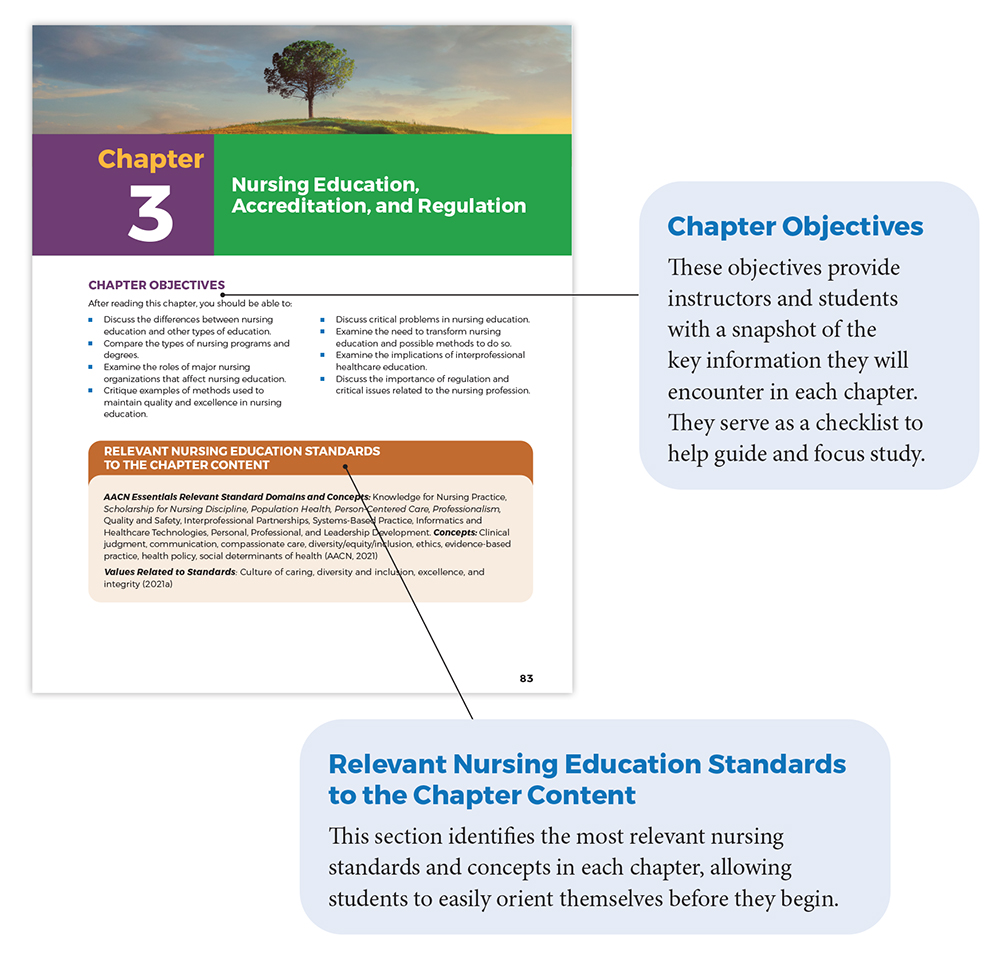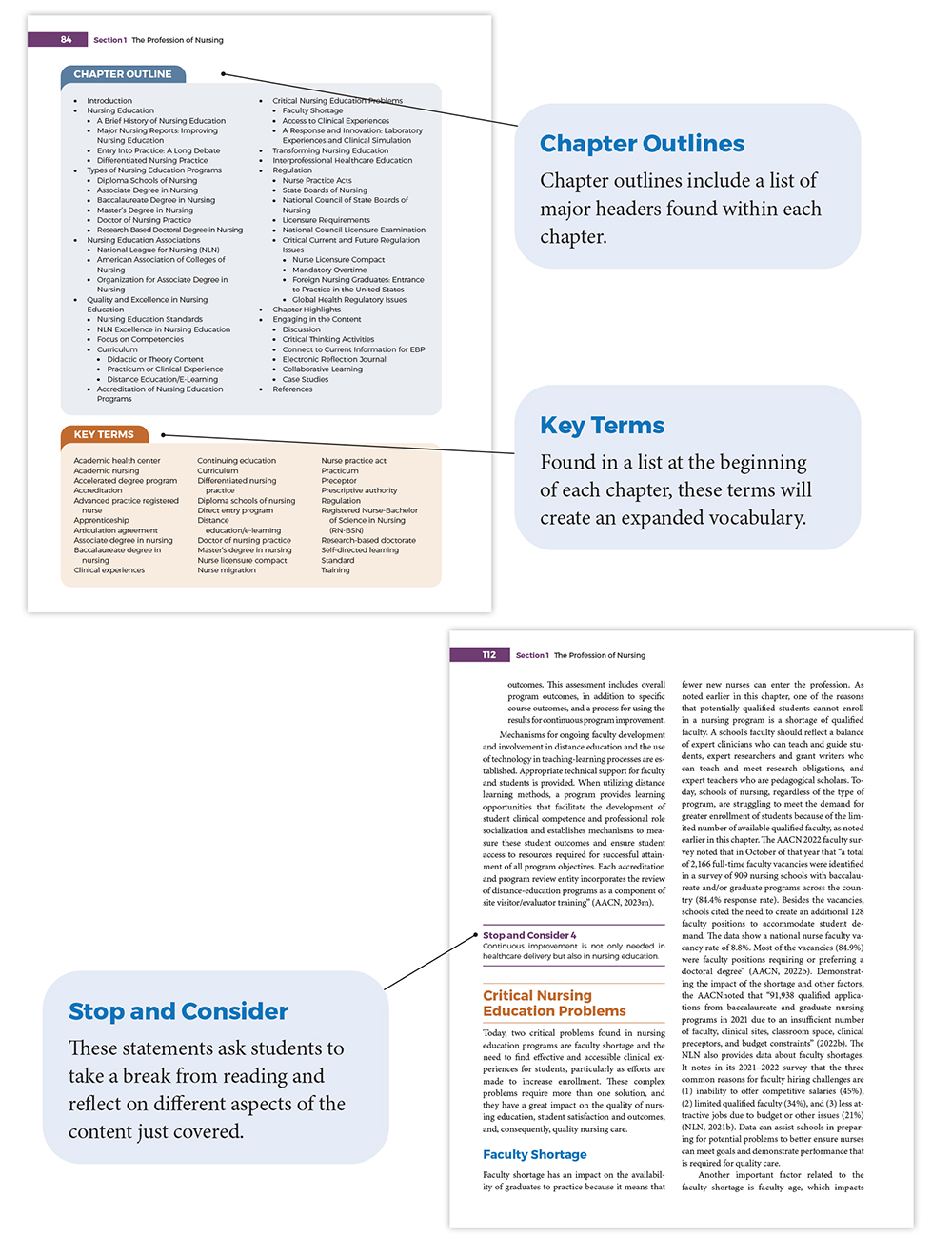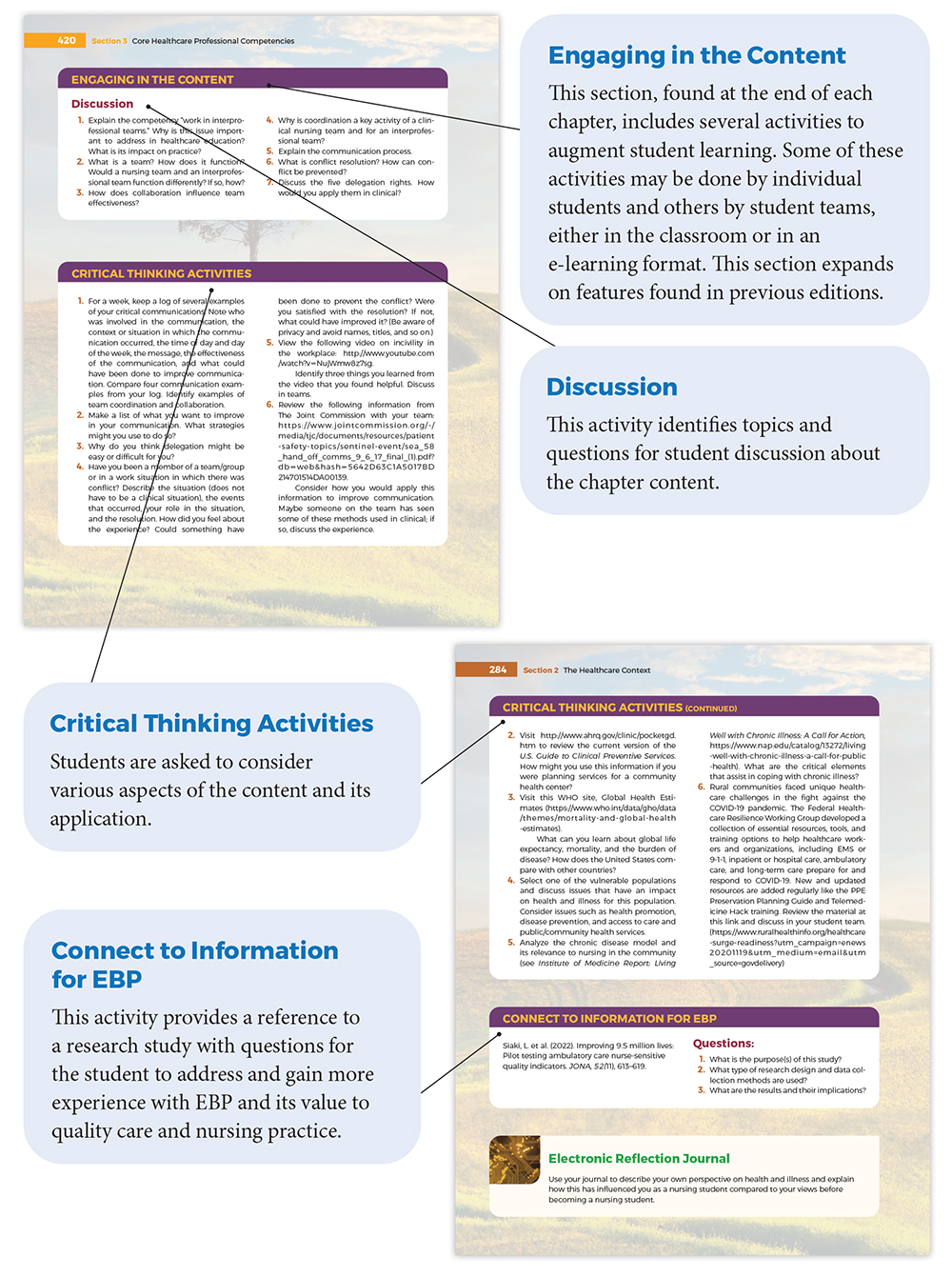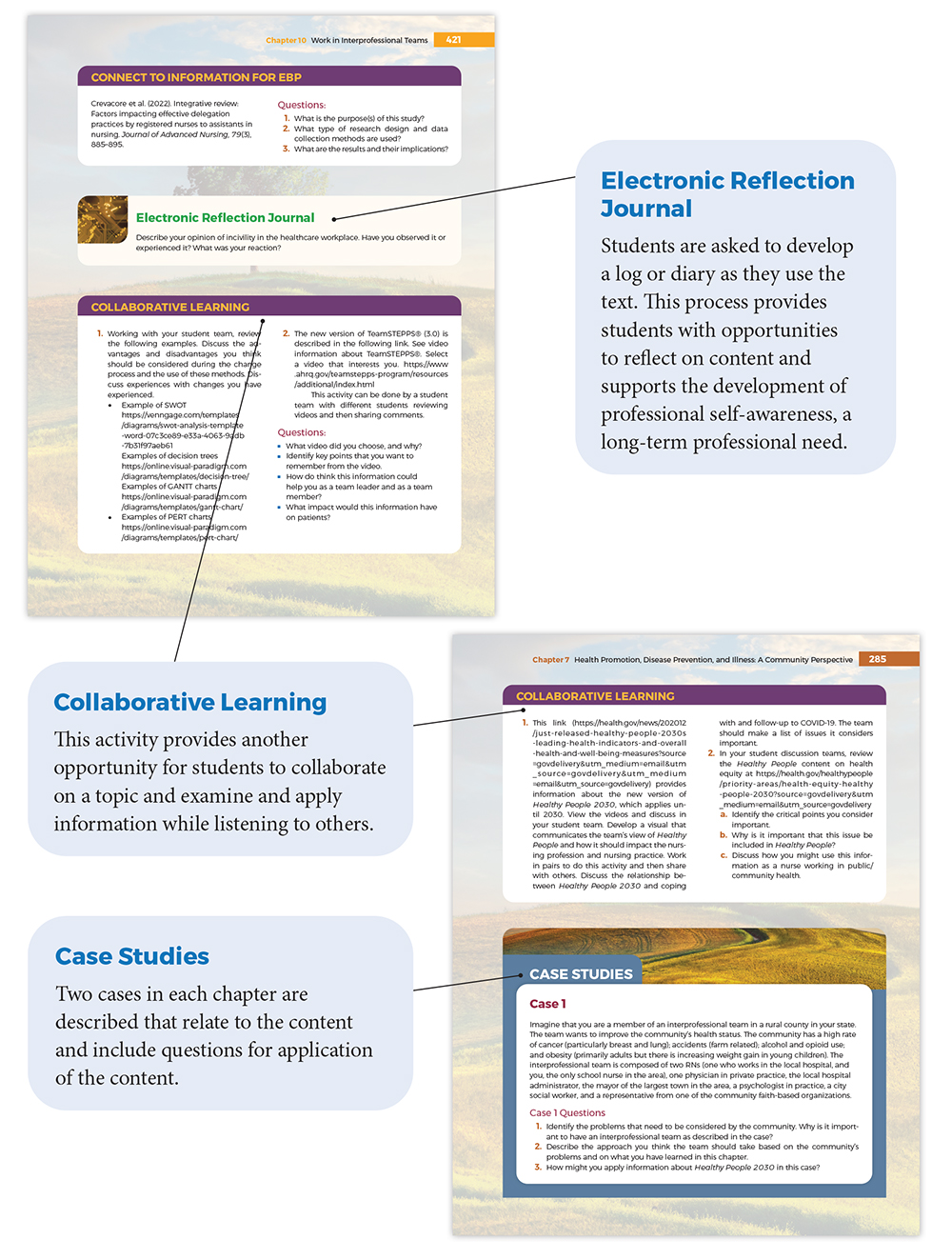Professional Nursing Concepts: Competencies for Quality Leadership, Sixth Edition drives comprehension through various strategies that meet the learning needs of students while also generating enthusiasm about the topic. This interactive approach addresses different learning styles, making this the ideal text to ensure mastery of key concepts. The pedagogical aids that appear in most chapters include the following:

A screenshot and descriptions of the Chapter Objectives and Relevant Nursing Education Standards and Concepts to the Chapter Content features of the book.
Text in the description for Chapter Objectives reads, These objectives provide instructors and students with a snapshot of the key information they will encounter in each chapter. They serve as a checklist to help guide and focus study. Text in the description for Relevant Nursing Education Standards and Concepts to the Chapter Content reads, This section identifies the most relevant nursing standards and concepts in each chapter, allowing students to easily orient themselves before they begin.

A screenshot and descriptions of the Chapter Outlines, Key Terms, and Stop and Consider features of the book.
Text in the description for Chapter Outlines reads, Chapter outlines include a list of major headers found within each chapter. Text in the description for Key Terms reads, Found in a list at the beginning of each chapter, these terms will create an expanded vocabulary. Text in the description for Stop and Consider reads, These statements ask students to take a break from reading and reflect on different aspects of the content just covered.

A screenshot and descriptions of the Engaging in the Content, Discussion, Critical Thinking Activities, and Connect to Information for E B P features of the book.
Text in the description for Engaging in the Content reads, This section, found at the end of each chapter, includes several activities to augment student learning. Some of these activities may be done by individual students and others by student teams, either in the classroom or in an e-learning format. This section expands on features found in previous editions. Text in the description for Discussion reads, This activity identifies topics and questions for student discussion about the chapter content. Text in the description for Critical Thinking Activities reads, Students are asked to consider various aspects of the content and its application. Text in the description for Connect to Information for E B P reads, This activity provides a reference to a research study with questions for the student to address and gain more experience with E B P and its value to quality care and nursing practice.

A screenshot and descriptions of the Electronic Reflection Journal, Collaborative Learning, and Case Studies features of the book.
Text in the description for Electronic Reflection Journal reads, Students are asked to develop a log or diary as they use the text. This process provides students with opportunities to reflect on content and supports the development of professional self-awareness, a long-term professional need. Text in the description for Collaborative Learning reads, This activity provides another opportunity for students to collaborate on a topic and examine and apply information while listening to others. Text in the description for Case Studies reads, Two cases are described related to the content and include questions for application of the content.